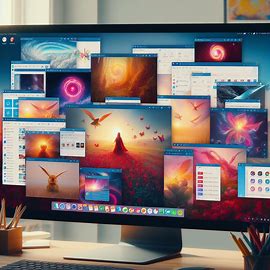Windows and Clipping in Computer Graphics
In computer graphics, windows and clipping are two interrelated concepts that play a crucial role in defining the visible portion of a scene displayed on the screen.
Windows:
- A window acts as a rectangular viewport or frame that defines the area on the screen where a portion of the larger scene is displayed.
- It's analogous to looking through a window at a real-world scene. Only objects or parts of objects within the window's boundaries will be visible.
- Windows are often specified by their coordinates (bottom-left corner and top-right corner) or width and height.
Clipping:
- Clipping is the process of removing portions of a scene that lie outside the defined window.
- This is necessary because the screen has finite resolution and cannot display everything from the potentially vast virtual world of the scene.
- Clipping algorithms determine which parts of the geometric objects in the scene fall within the window's boundaries and discards the rest. This improves rendering efficiency by focusing computational resources on visible objects.
Clipping Algorithm Types:
- Line Clipping: Algorithms like Cohen-Sutherland or Liang-Barsky clip lines that extend beyond the window boundaries, keeping only the visible segment.
- Polygon Clipping: Sutherland-Hodgman algorithm and its variations clip polygons (e.g., triangles, rectangles) that partially or fully lie outside the window.
Benefits of Clipping:
- Improves rendering performance by focusing calculations on visible objects.
- Reduces the amount of data sent to the graphics card for processing.
- Enables displaying large scenes on a finite screen.
Relationship Between Windows and Clipping:
- The window defines the clipping area.
- Clipping algorithms operate on objects in the scene, removing parts that fall outside the window.
- The combined effect of windows and clipping ensures only the intended portion of the scene gets displayed on the screen.


No comments:
Post a Comment